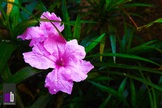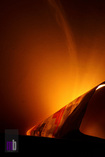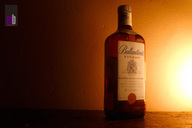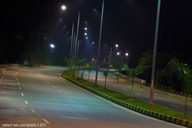 Fort Kochi, the incredible tourist spot in India, or even Asia. Yesterday, I had a thought of shooting the sun set at Fort Kochi. I am staying some 20kms away from the location, got in a bus by 5pm. I had a good hope to reach the location before set. But the great traffic jam in Kochi cheated me ( I am not supposed to blame the jam because I was late to start). Finally bus reached there by 6:35pm. I get down from the bus and ran toward the scene which was there in my mind, by the time the Sun had left the scene.
Then I found something through the Chinese Fishing Nets, the ICON of Fort Kochi. The sky was smiling at me to have a snap of him. He was waiting for me to dim. Turned my camera into Aperture Priority mode and fired my shutter.. I got what is there in the picture above..
Just after the sun left me..
Mahesh Babu Photography
http://sharpsnaps.weebly.com
 This happened in this morning, the rainy morning of September 15th, 2012. I went to railway station to drop one of my friends, it is Harthaal (Strike) here, due to the unethical, unnecessary, kind less hike in the price of fuel. When I reached back home, something hit in my mind,a pink color. I just jumped out of home with my camera and reached the pink. She was smiling at me, my flower; with small drops of the rain which left her some moments ago. When I checked the surroundings of my flower, I realized that this would be a good frame, I turned my camera's mode dial to A for aperture priority, and adjusted to the lowest aperture as possible, and my camera decided the shutter speed as 1/56th of a second. ISO was 100 at that time,cos I had enough light on my subject. When I looked at my pink flower, she was with her diamond ring, which is gifted by the rain. That pulled me into that view. Hope everyone like flowers, because its one of the beautiful creations of the GOD almighty. Flowers are angels, living angels on earth. To make us happy and keep us fresh. This is a kind of macro photography i believe. A close up shot of a flower, by giving all the detailing of that. I love to capture macros, cos I can keep the camera handy and non-shaky. My hands shows such a problem of vibration sometimes. Follow my post here or you can get those in facebook or flickr
In photography Lens is the most significant part. For the good quality and feel of image, lens substances much more than the camera body. If you have a good camera body from the leading brands, then you do not need to urge to upgrade and update your camera for some additional features like megapixels or modes, try to invest that in the part of optics(lens). Lens according to area of photography using DSLR Camera As per the photograph you are going to create, you have to look at different type of lenses in terms of focal length and aperture available. Difference lens give extreme different feel and depth of field. Here are some best chosen lens for distinguish part of photography. Portrait Photography: In the matter of portraits, our focus has to be on the person to be captured, and our object has to be sharp to see in the photograph, for this be better go with the lens ranging a focal length from 24mm-150mm with wide aperture. Which can be prime lens too ( Prime lens are the one with single focal length such as 50mm, 85mm, 135mm). Or zoom lenses like 24-70mm, 24-105mm, 18-55mm, 15-85mm or even 70-200mm. Prime lens can provide sharp images and which can create attracting bokehs. Landscape Photography: Best known lens for landscape photography starts from a focal length of 8mm to 35mm, because, we need to capture a broader angle to get them maximum impact of the landscape. When we are using the lens with smaller focal length, we get maximum coverage in a single frame, else we will have to go for Panorama mode to bring down the maximum effect and feel of the photograph. We can practice this with the lens like 8-15mm, 10-22mm, or 17-40mm. When we shoot landscapes, sun is being a villain sometimes, there we use filters like UV, Polarizing, Neutral Density, Graduated Neutral Density to add additional impact to the optical leavel. A camera with full frame body is more helpful in capturing landscapes. Now we have fish-eye lens available to shoot the wide angle. Sports Photography: Sports photography , You need the largest possible focal length as we have to shoot it from a long range from the athlete or player, find the lens with largest possible aperture as we shoot from long range, amount of light coming in from the object when we use high shutter speed, will be less. Try to find the best image stabilizers this would help us to avoid shakes for long time handhold shots, and lightest possible weight, this will help us to hand hold lens for longer period. Having all these things in a single lens is bit difficult, but possibility of improvements are there step by step. Focal length must be Large, so this is the first priority to buy lens for sports photography. Sport photography lens can be started at a focal length of 300mm.Keep image stabilization as the second most important factor for Sports Photography. Prime lens can play a better role here, but we do not choose those because its highly priced. Which can give a great effect with sharp subject and bokeh background. Best chosen lens for this purpose are 300mm, 400mm, 500mm or even 600mm prime lens or 100-400mm,80-400mm, 150-500mm zoom lens. Moreover, prime lens have larger apertures than zoom lens. More about lens would continue in the next post...
 When I was on the shoot of Bottles, day before yesterday, I did not notice what exactly happens when I use my soft box to get the lighting on my subject. But today, when I tried something with the same source of light, felt something on the newspaper. As the image shows you something, I felt some rays coming through the newspaper from my soft box. Then I realized that, I have to showcase this beauty to my world of photography lovers. That is the main reason for this photograph. This pulls out the light from my soft box and tell us the power of shadows, or the importance of shadows to see the attraction of light when it is there, as a blind get vision. Light and shadow are the two extreme things which stays together to get the perfection of vision. For a photographer, [in my view point], shadows are equally important as light. Keep both your light and shadows tracked. -Mahesh babu photography
 Yesterday, when I was on the way back form office, I had a thought of trying lighting to an object. I reached room by 7PM; i believe. I was alone there, searched in the kitchen and backyard for something to keep as my subject. Finally I found an empty bottle of Ballentine's in my kitchen sheft, and a bottle of 8PM Indian Whisky. I had a time with this whisky last week. Took that and kept on my bench, which is there in my room. As photography is being my breath, I am seeing something sometimes, and getting some ideas (good and bad). I try it all the time and find something. I prepared my own soft box, with the help of some house hold items, tried in thousand ways to make somewhere to a perfect lighting, but I could not. So I finalized to fix this as my lighting soft box. To know more about my soft box, mail me in person @ [email protected] . Actually that's my secret, if someone like to know that am ready to share in person. And let me tell you, this is not at all costly, as max as INR 20/- (50Cents) . Now I believe that, lighting for stock photography about beverages, maily alchoholic beverages, we can use yellow beem of light, which helps to make it somewhat attractive. Hope to make more Stock photographs Click here to Sell your photos ... - Mahesh Babu
 on the way to infopark in a cool night I wish to share my view points once I clicked this photograph, this is one of the interesting area near Kakkanad, where I stay now. I am close to this location, and I am used to this road. We call that as Infopark highway or expressway. Nice road which becomes traffic less at nights. When I had no camera in my hands, I had a image in my views to click a photograph like this, I know, we can make it even better with more tries. If any good photographer see this, he/she can have many ideas about this, to make it better and better. As far as I know, and am able with my camera, I did this. Now about my settings, I always give long exposure at nights, this photograph is @ 2", ISO200, and F/5.2 as this is in manual mode and my camera gives this the most. I am expecting some suggestions from the one who are into photography, to make it better.
Before getting into the details, it would help to have some terms of reference. In brief, dynamic range (DR) is the range of luminance values from the darkest to the brightest. The original, real-world scene has a certain inherent DR which may be quite large – a ratio of 100,000:1 or more as DR is measured. Your eyes can perceive a subset of the scene’s DR (about 10,000:1), while your camera can record a smaller subset than your eyes can see – perhaps 400:1 for a DSLR. The DR of a monitor or a printed photograph is smaller yet. High dynamic range (HDR) in photography means representing the full range of tonality present in the scene with high perceptual faithfulness. Most HDR techniques currently use software to combine several different exposures of a scene into a single file that maps the full range of luminance at every pixel. This HDR image is then processed in various ways depending on the ultimate usage. For most of us this means tone mapping the HDR image into a 16-bit or 8-bit digital file such as a JPEG or TIFF image. If this is enough definition for you and you want to get into the part that shows how to get things done, feel free to skip ahead to the next section on shooting technique. The rest of this section provides the details of what HDR is for those who prefer to know “what” before getting into the “how”. Key points covered in the rest of this section: - Definition of HDR
- HDR vs. 8-bit or 16-bit file formats
- Capturing HDR images
- What is HDR good for?
Stock PhotographyIf you're looking at getting into stock for the first time, or perhaps you've tried other outlets and been disappointed, then I'd suggest a fairly simple three-step process. 1. First of all you need to make sure you understand what stock is, what's required and what you need to do to make it work. Stock has changed significantly in recent years and unfortunately a lot of photographers just haven't caught on yet! 2. Then you need to ask yourself some tough questions. There are seven fundamental questions you need to ask yourself that I outline below. There are no right answers and no 'pass mark' but you need to consider each one and make sure you understand the implications of each. 3. Then if you're still keen to give it a go, you need to find an outlet and make a start. It sounds easy, but that's where the real work begins! The good news is, if you take a few minutes now to work through this 'self-assessment' process, you will be in a much better position to make the right decision for you ... Whether to make a start now and make it work regardless, or wait a while so you can work on the specific areas where you might be lacking, the important thing is to understand what you're getting into and exactly what's required to make it work. There is simply no value in starting with Stock Photography until you have the knowledge, the photos and the time to do it properly ... it's much better to take your time and get it right! Stock Photography 101
|





 RSS Feed
RSS Feed